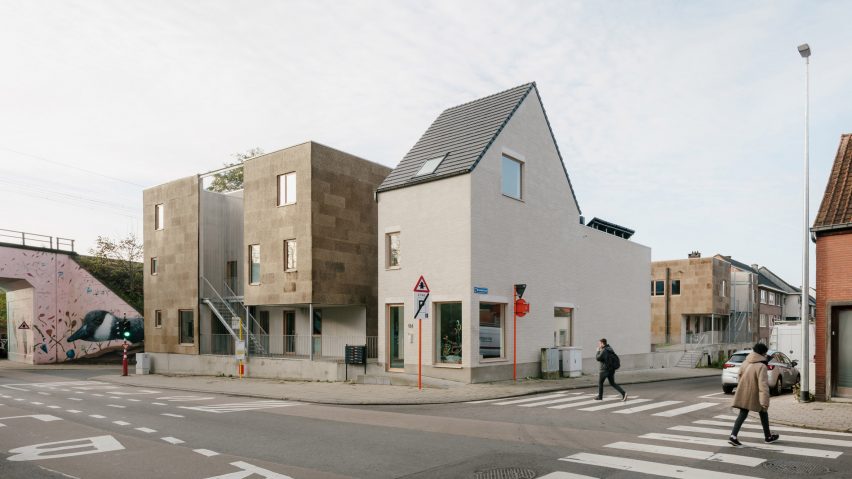
Officeu Architects unites cork-clad housing blocks in Belgium with communal living areas
Two cork-clad apartment blocks flank a renovated 18th-century building at the De Sijs co-housing project in Leuven, Belgium, designed by local studio Officeu Architects.
Located on a street corner at the edge of Leuven's historic town centre, the project combines 12 apartments and shared facilities around a central garden.
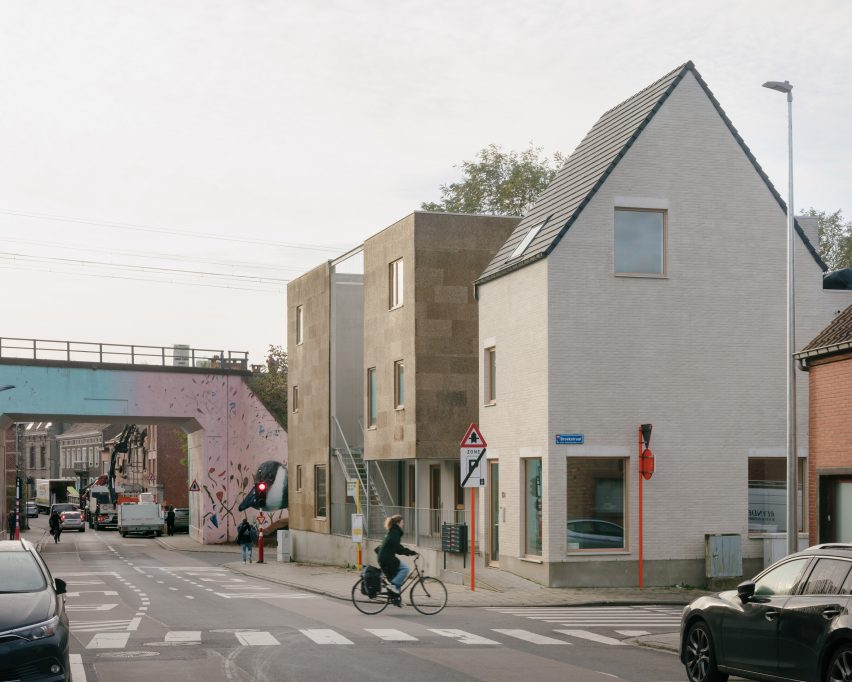
The project, which is shortlisted in the housing project category of Dezeen Awards 2022, is designed to maximise opportunities for residents to meet each other.
It is named De Sijs after the cafe that formerly occupied the central 18th-century building, which has been repurposed as a communal living area and the "beating heart" of the project.
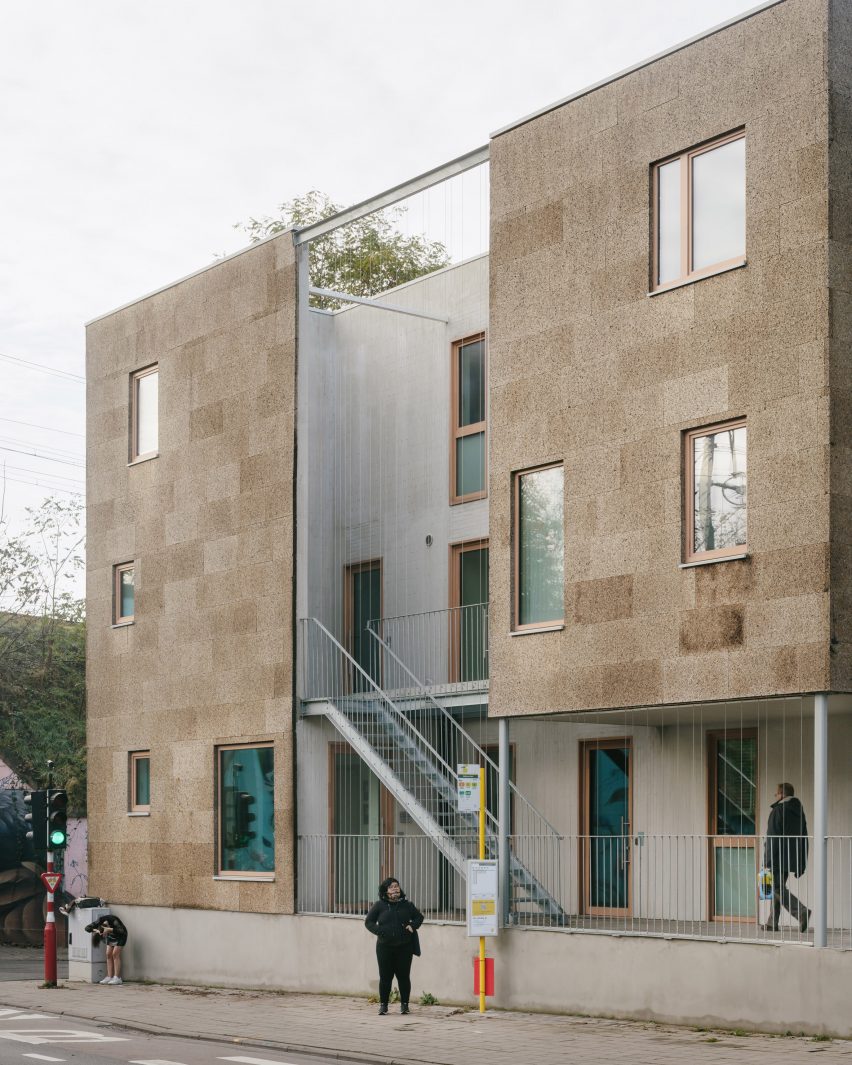
"Three separate building volumes are connected by an L-shaped circulation axis, along which the entrances to the flats and the collective spaces are located," explained Officeu Architects.
"A listed 18th-century building at the centre of the circulation axis is the main entrance to the project and contains a collective dining space with kitchen, a cosy living space, a fully equipped guest stay, an atelier and a coworking space, becoming the inviting face to the project and the beating heart of the collective life," it continued.
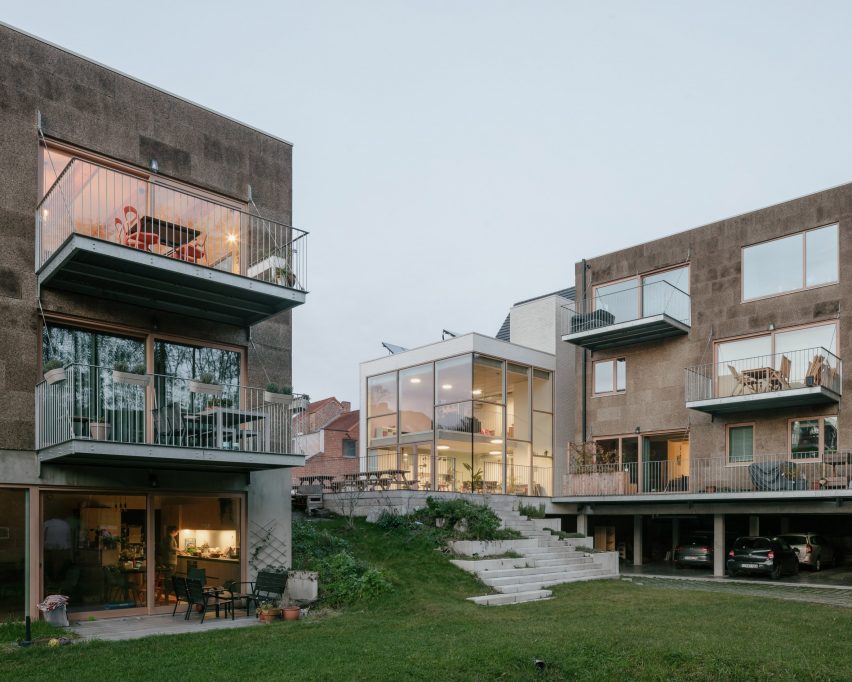
The thin gabled form of the old cafe stands at the corner of the site, with two blocks of six apartments on either side creating new cork-clad street frontages.
At the rear of the existing building, full-height glazing opens up the living and dining areas to the adjacent garden where a paved patio steps down towards a lawn.
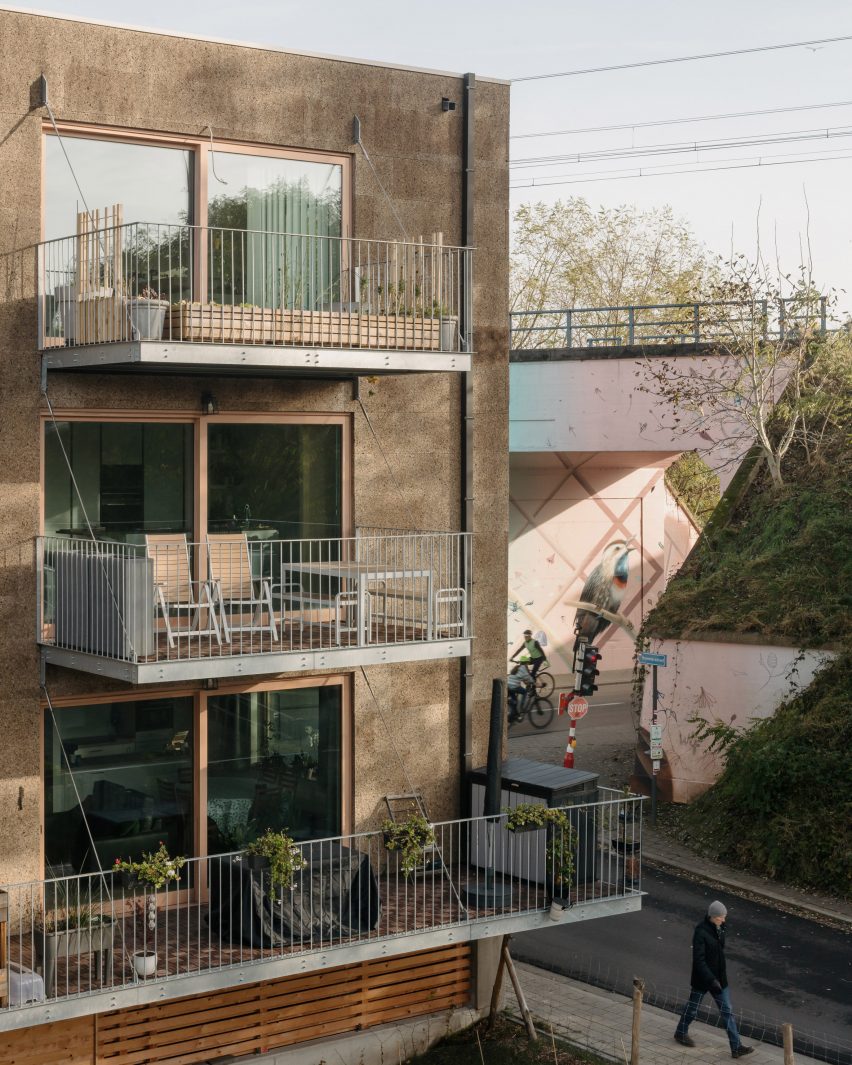
Inside De Sijs's apartment blocks, residences range from compact studios to three-bedroom duplexes. They are arranged so that each one opens onto either a patio or balcony facing the main garden.
Cut-outs in the front elevation of the blocks create spaces for external access stairs, allowing each apartment to have its own front door. The doors are hidden behind a screen of metal wire that will eventually host climbing plants.
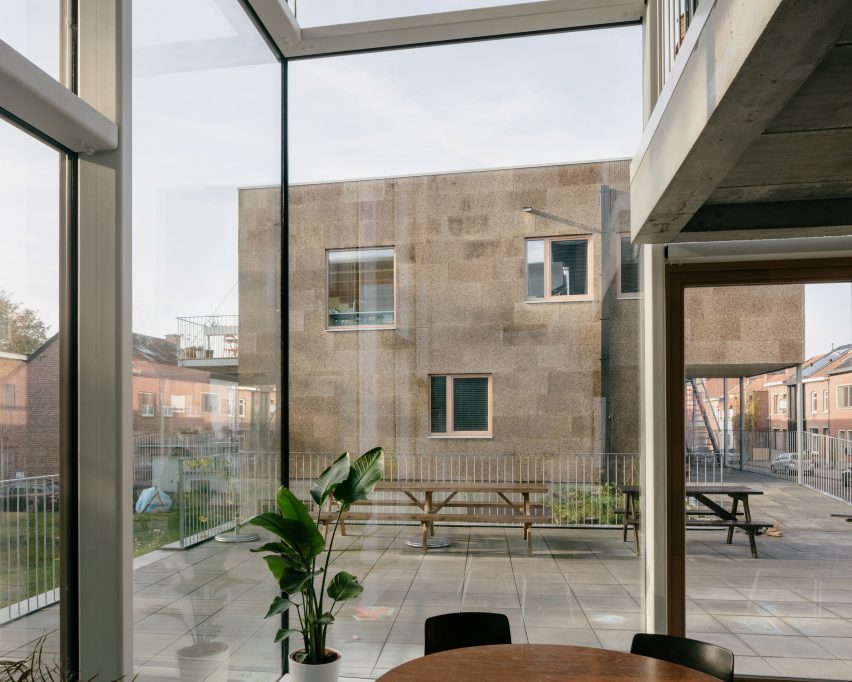
De Sijs' structure of wood and steel with simple infill walls was chosen to create easily modifiable interiors, and the first residents were able to customise their spaces during the design process.
"A co-housing project is in many ways different from a standard housing project," said Officeu Architects.
"Collective and personal interests must go hand in hand at all times," the studio added. "To achieve this, the future inhabitants were involved in the design process from a very early stage."
The wooden ceiling beams and ventilation ducts have been left exposed in the pared-back white interiors, which are enlivened by coloured tiling.
Panels made from waste cork clad the exterior of both apartment blocks, intended to bring a softness and warmth to the structures while buffering sound from the road.
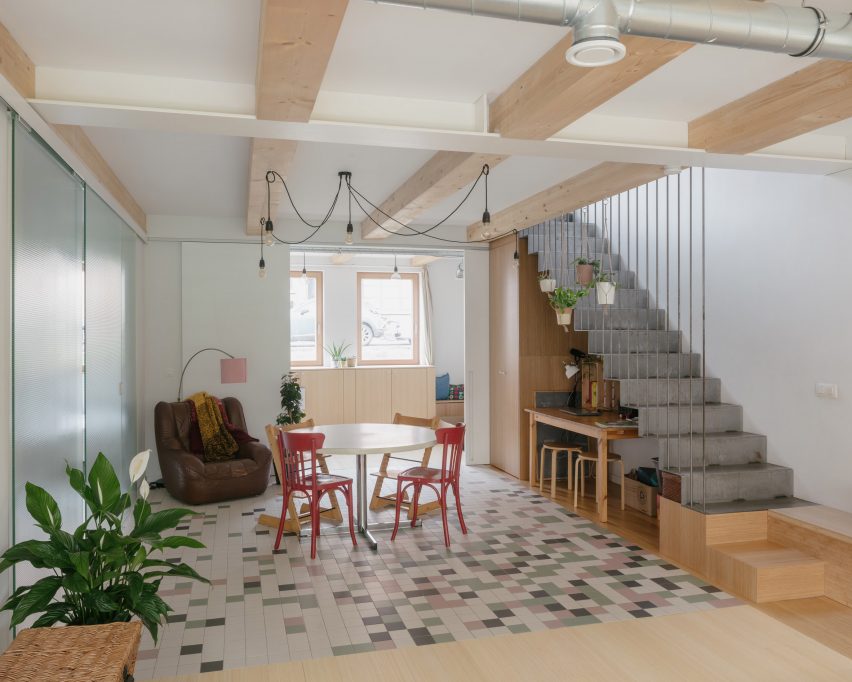
Cork, which is made from the bark of the cork oak tree, has become an increasingly popular building material in recent years because it is renewable, resistant and insulating.
Other projects that use it as cladding include the Cork Screw House by Rundzwei Architekten and Casa Bonjardim by ATKA Arquitectos.
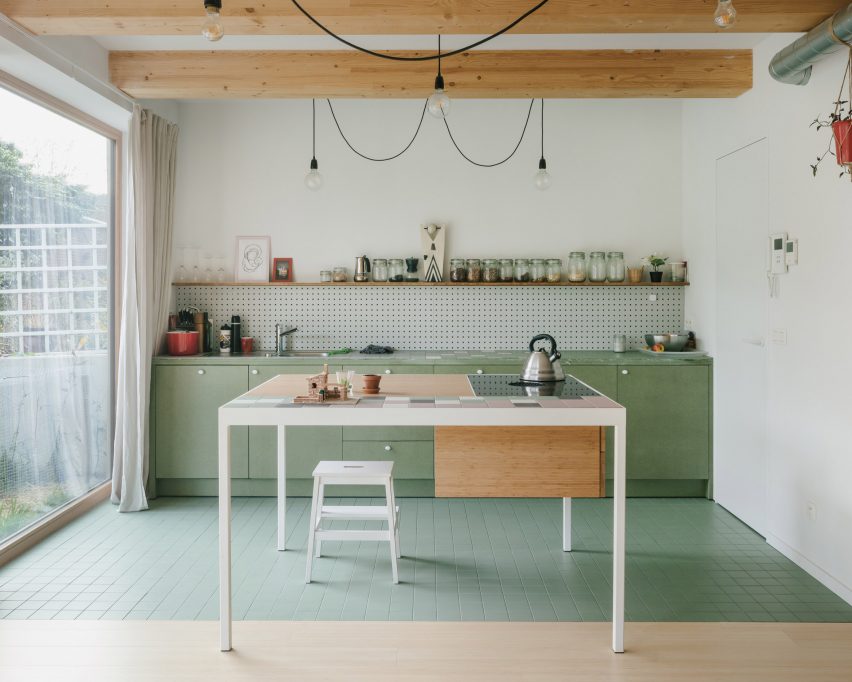
Another project shortlisted in the housing project category of the Dezeen Awards 2022 is Stories in Amsterdam by Olaf Gipser Architects, which also encourages community living.
A dormitory for nurses at Chulalongkorn Hospital in Bangkok by Plan Architect also made the shortlist.
The photography is by Stijn Bollaert.